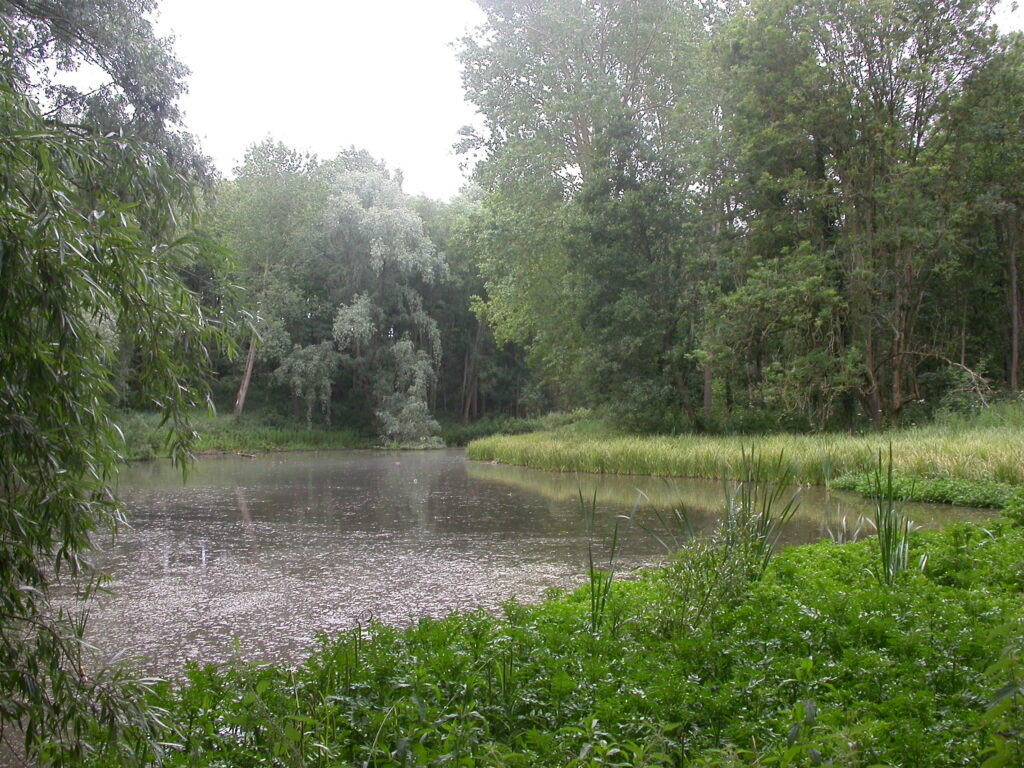The landscape of Leeds Abbey – perhaps Capability Brown’s smallest complete commission – may be unlisted but it is no less historically significant for that. Kent Gardens Trust and the Gardens Trust recently responded to a planning application to build a new manor house there, objecting to details of the current plan and the lack of any legally binding agreement to restore the Brown landscape. We were therefore relieved to hear that Maidstone Borough Council has turned down the application.
Leeds Abbey not on the Register
Kent Gardens Trust had alerted us that an application had been made to build a major new house in this Capability Brown landscape. We were not formally consulted by Maidstone Borough Council as the landscape is not on Historic England’s Register of Parks and Gardens. Dr Hugh Vaux of Kent Gardens Trust had researched the landscape of Leeds Abbey for a chapter in their book about Capability Brown’s work in Kent. That research and the advice of Brown expert John Phibbs underpinned our responses to this planning application.
Our concern is for the conservation and enhancement of what is a unique survivor of Brown’s work. GT Conservation Officer Margie Hoffnung said: “this application presents an unparalleled opportunity to redress the neglect at Leeds Abbey. Leeds Abbey is the only Brown landscape in Kent which has been little changed, due to its abandonment within 20 years of its completion. Kent GT have spoken to John Phibbs (the Brown expert) and in his opinion, it is also possibly Brown’s smallest complete commission and thus unique in this way too. Therefore, its preservation is of great importance.”
Compared to doing nothing or managing the site as it is, building a prestigious new house on the site may be ‘the least worst option’ as it offers an opportunity to rescue the landscape from its current state of neglect.
Heritage Report lacks evidence
The heritage report submitted with the planning application makes two questionable assumptions, without giving any evidence. The first is that Brown himself would have proposed the replacement of the Tudor house with a contemporary house in a more prominent location. It is not the case that Brown always recommended this.
Secondly, it states that the landscape ‘was not completed’. To quote Kent Gardens Trust’s response to the planning application: “The extraordinarily large sum of £2,000 was paid to Brown for the work in the early 1770s so, unless proved otherwise, it can be assumed that this is funding for an almost complete Brown landscape. As the site is relatively small, it is likely that this large sum also funded the creation of the farm buildings, which are shown on the 1797 Ordnance Survey drawing. … Unless proved otherwise, it is logical to deduce that the 1797 OS drawing shows the completed Brown landscape for Leeds Abbey.”

The essential Brownian features of the lake in a valley with gentle slopes have survived, as the site was abandoned less than 20 years after it was completed.
Proposals to change Brown’s landscape
The proposals in the planning application are to:
- Extend Capability Brown’s lake with a second smaller pond
- Build a large new manor house in Queen Anne Style near the original farm
- Conversion of a cattle barn to a pool house
- Restoration of the listed slype and dovecote
- Create a new entrance and drive
- Build two new residential gatehouse
In the view of Kent Gardens Trust, extending the lake would be seriously damage this Brown landscape. The proposed extension is within the Scheduled Monument on the site and would destroy part of the site of the Tudor house. It would also entail major earthworks and destroy the tumbling stream beyond the dam which was part of Brown’s plan.
If a new house is accepted it should be in the location around which Brown designed his landscape. Should re-location be accepted in the balance of planning policies, the house should sit within the original farm site. This would mean that the house would overlook the lake without the need for extending it. Any new house should also be in the plain Georgian classical style of Brown’s period, rather than Queen Anne style, and incorporate the Kentish ragstone facing appropriate to this area of Kent.

The existing drive follows the route on the 1797 OS drawing which shows the completed Brown landscape. Changing the position of the entry and drive would therefore be another deviation from Brown’s plan. The new gatehouses would be built in the open landscape between the two parts of Leeds village, which contain many listed buildings. Their design and location is inappropriate in this historic setting.
Restoration and management of this Historic Landscape
We are concerned about the phasing of the work in the planning application, with the restoration of the landscape pushed to the end of the project. The proposed work includes: ‘removal of the extensive scrub and woodland on the valley sides to open up designed views, the dredging and restoration of the lake (Brown’s key feature) and rectifying the cut and fill to the west of the lake which destroyed the original farm pond’. This enabling work should be moved to phase 1 of any development, not least because of the practicalities of carrying it out once any new house has been built.
Any proposal for Leeds Abbey should secure the rescue of this historic site from decline, and its long term management. The current application does not guarantee this. Margie Hoffnung therefore asked the officers of Maidstone BC “to legally secure all the works to restore the site with a detailed Section 106 Agreement to guarantee that this work is not sidelined” if any planning permission is granted at Leeds Abbey.
Permission refused
The application claims that the development is in line with Maidstone’s strategy to create two garden settlements, but Leeds is not among the greenfield sites that they have identified. Our conclusion was that, in addition to the significant harm that would be caused to this important heritage asset, the application was also in conflict with Maidstone Borough Council’s planning policies.
This was the main ground on which Maidstone BC refused planning permission, saying: “The development would result in the domestication of this countryside location by way of establishing a significant new dwelling along with hard and soft landscaping works which would result in harm to the character and appearance of this rural location. Two other dwellings are proposed which would be significantly visually intrusive along Lower Street. …The proposal would be contrary to policies SP17, DM1 and DM30 of the Maidstone Borough Local Plan 2017 and guidance within the National Planning Policy Framework 2021.”
They also noted that the development would cause ‘substantial harm to the significance fabric and setting’ of both the Scheduled Monument and the non-designated (ie. unlisted) Capability Brown landscape.
GT response re Leeds Abbey Kent
Planning application on Maidstone Borough Council website
For more information about Brown’s work see the Capability Brown website



